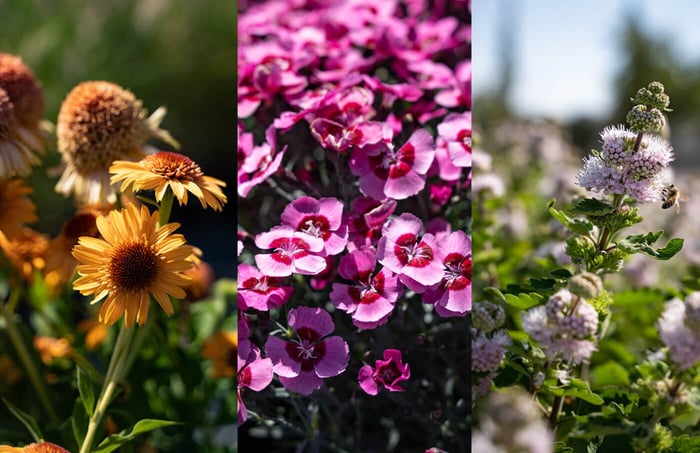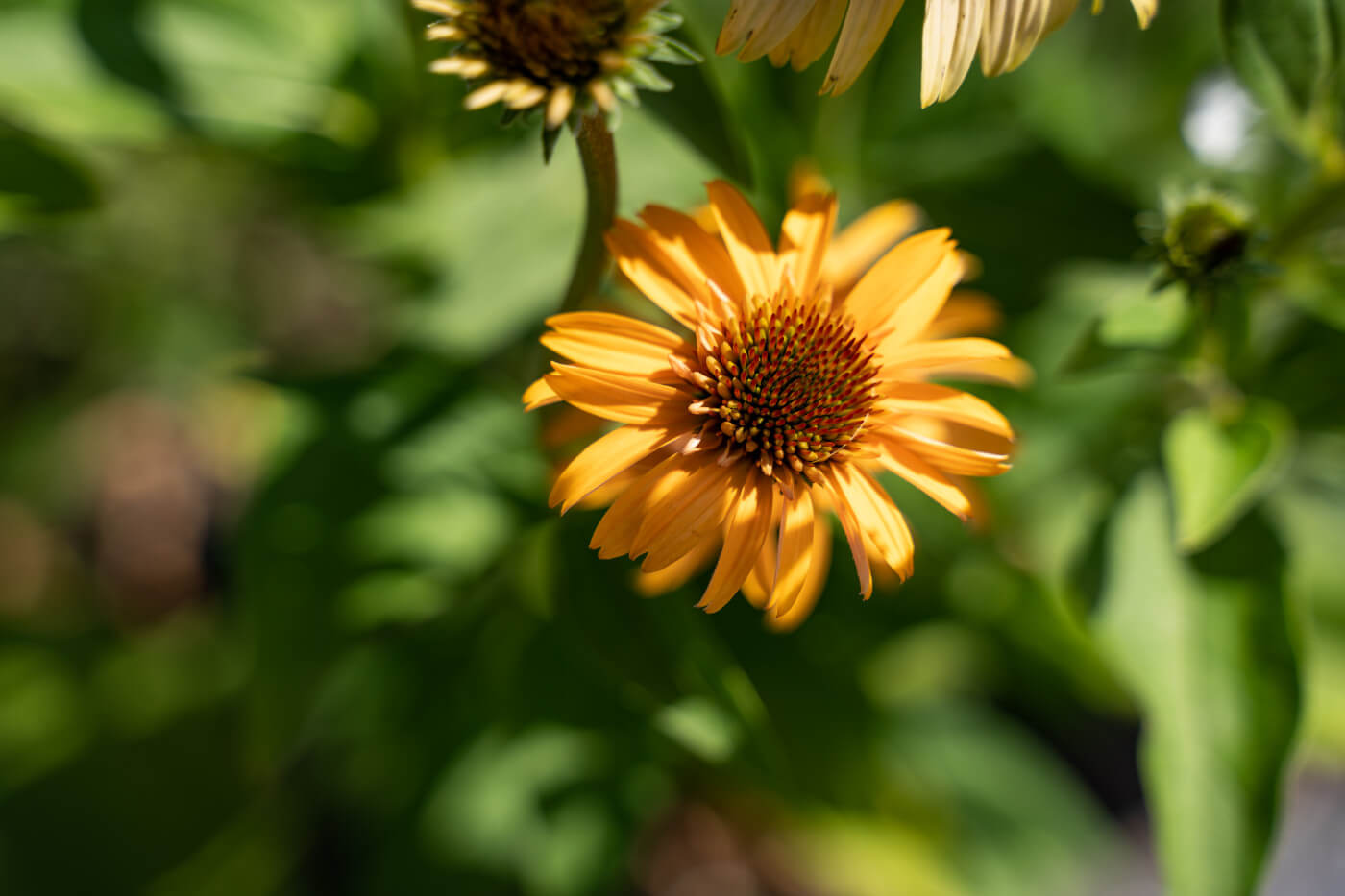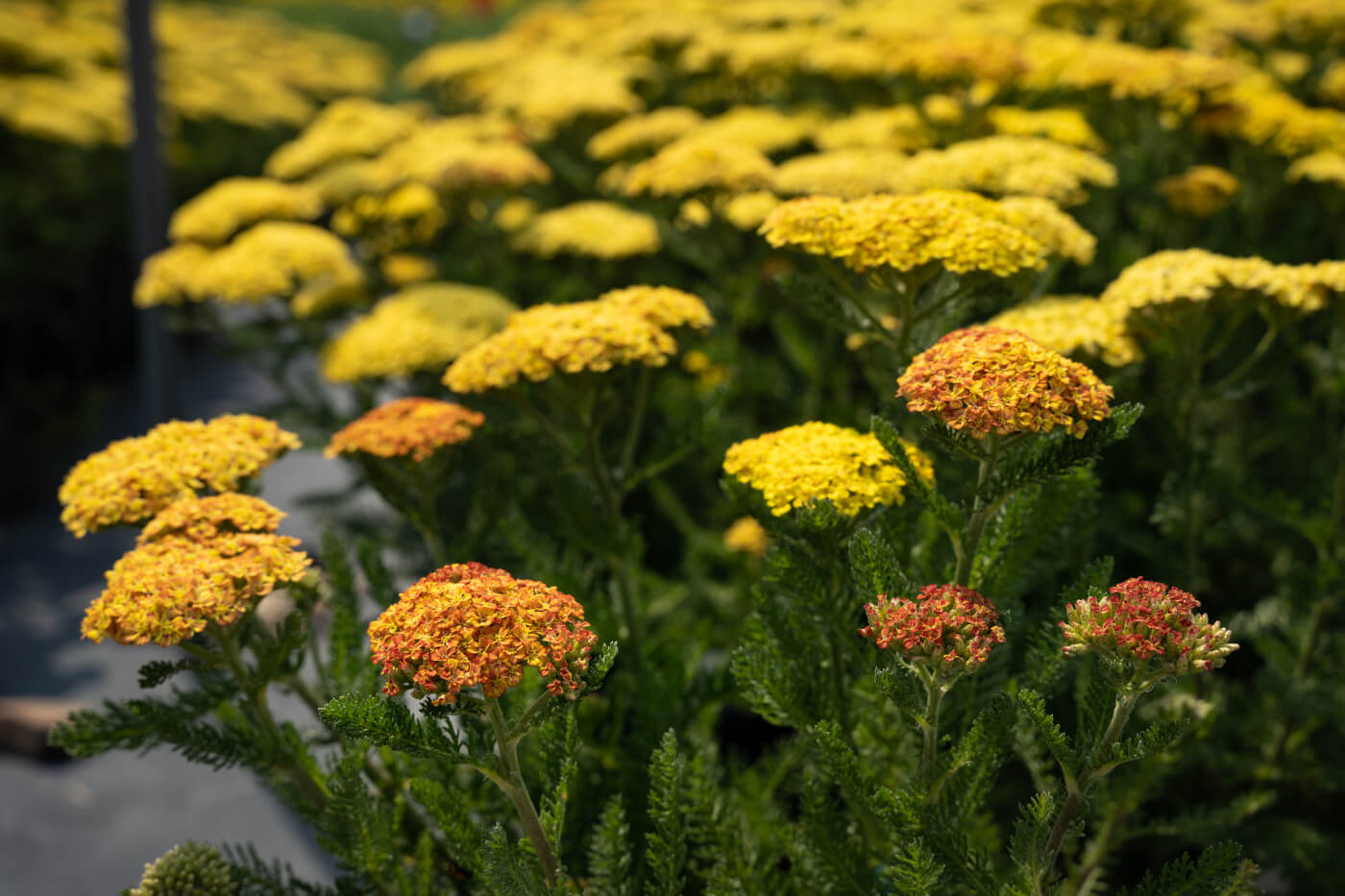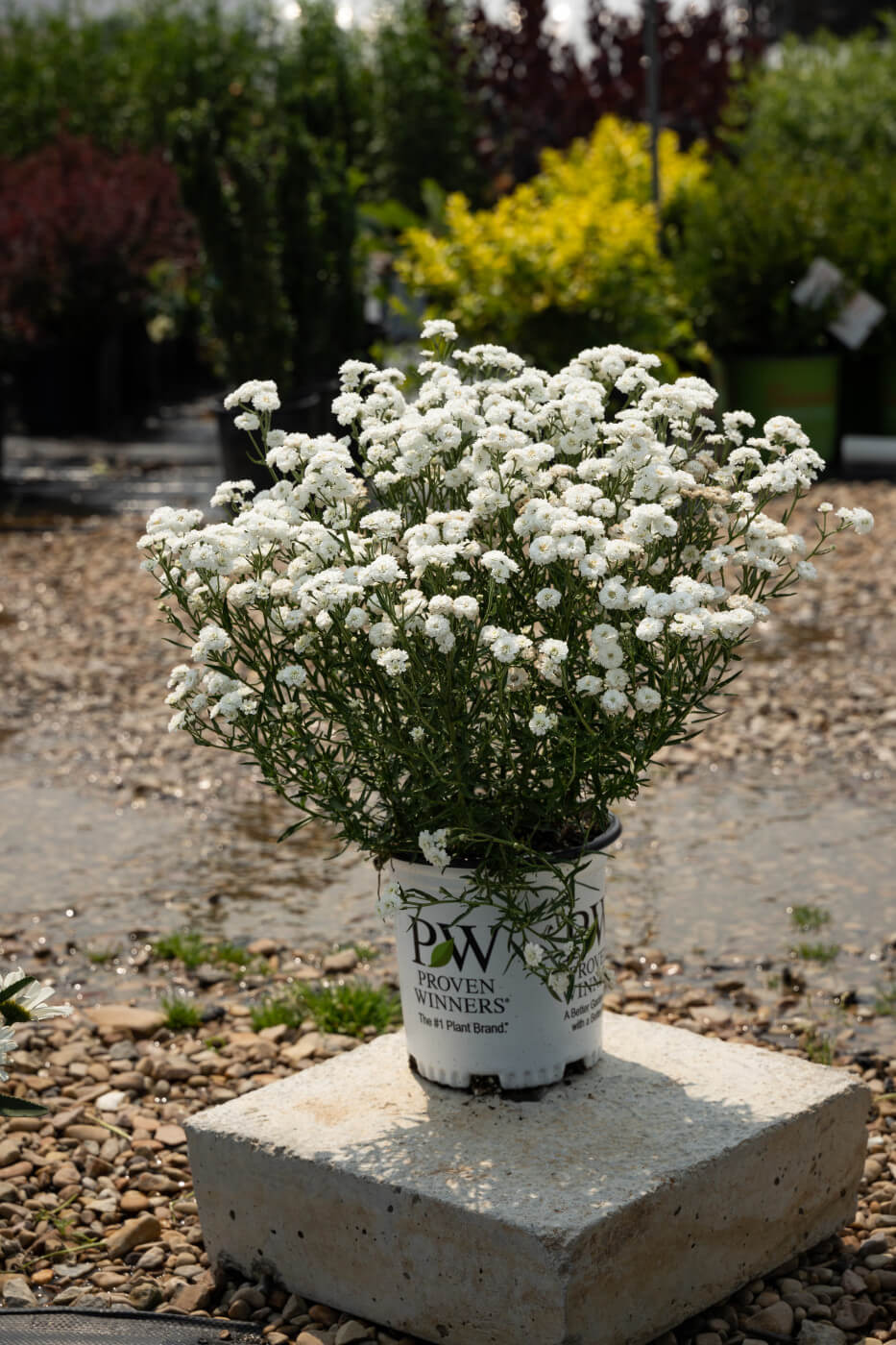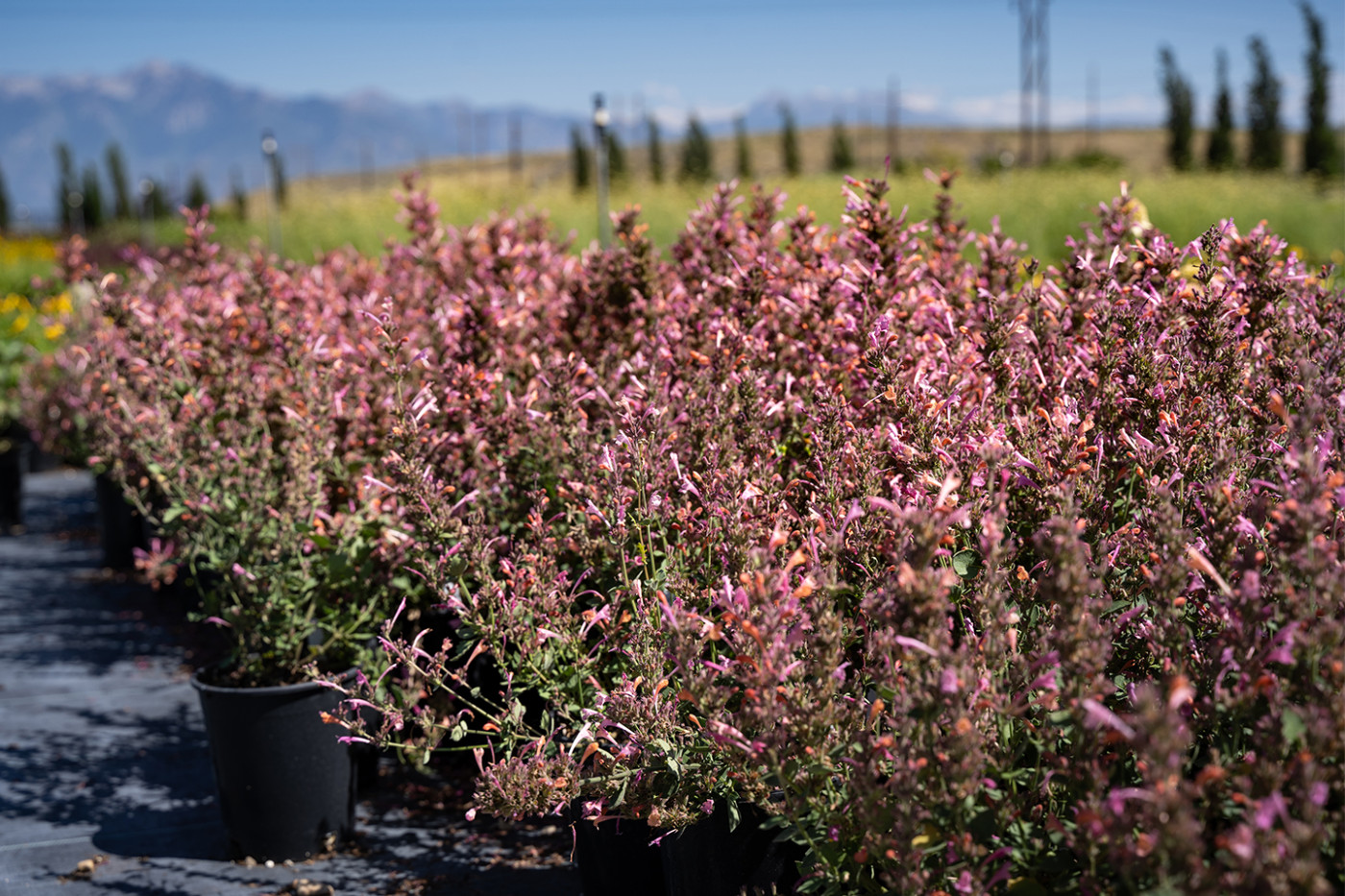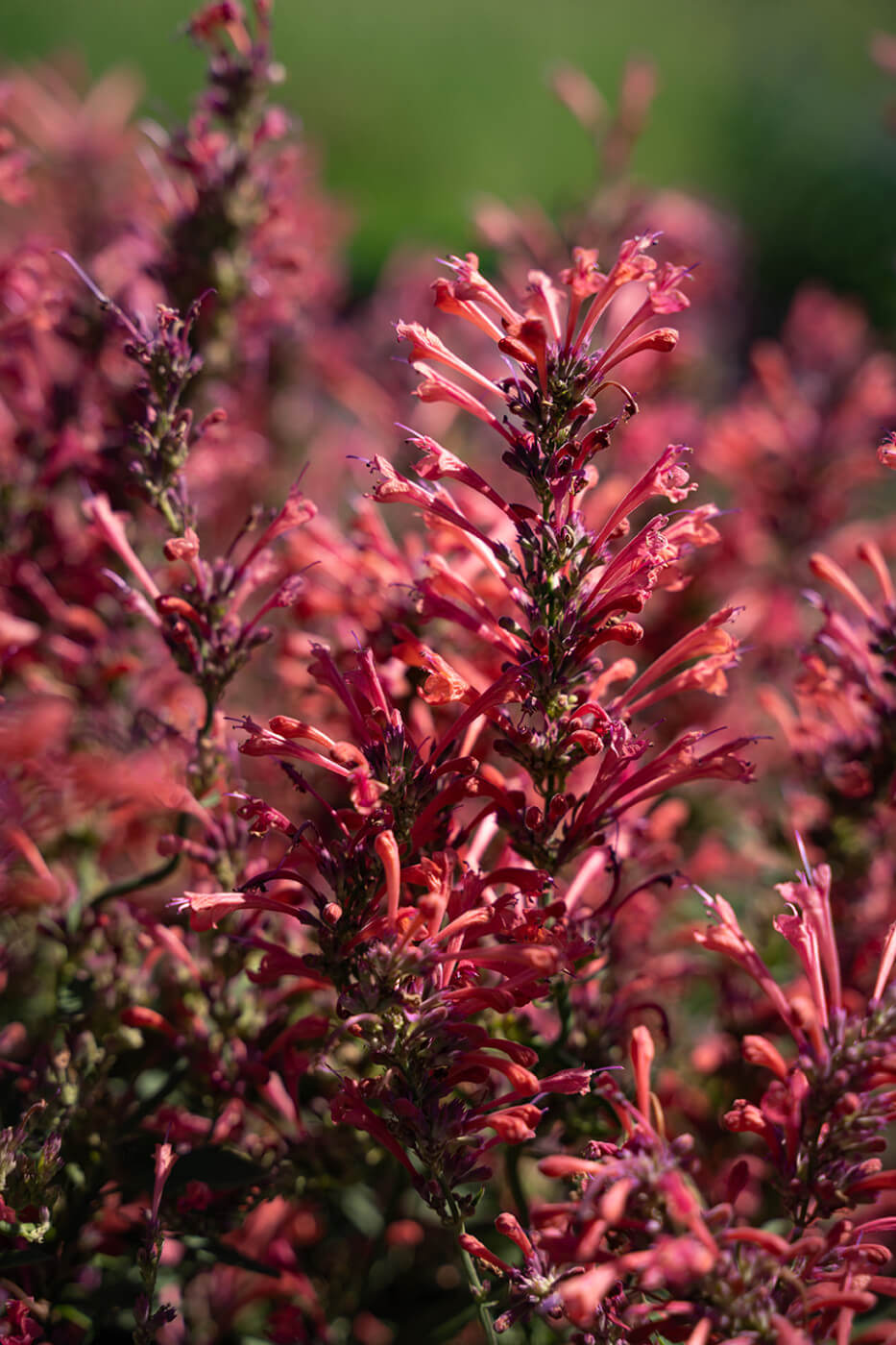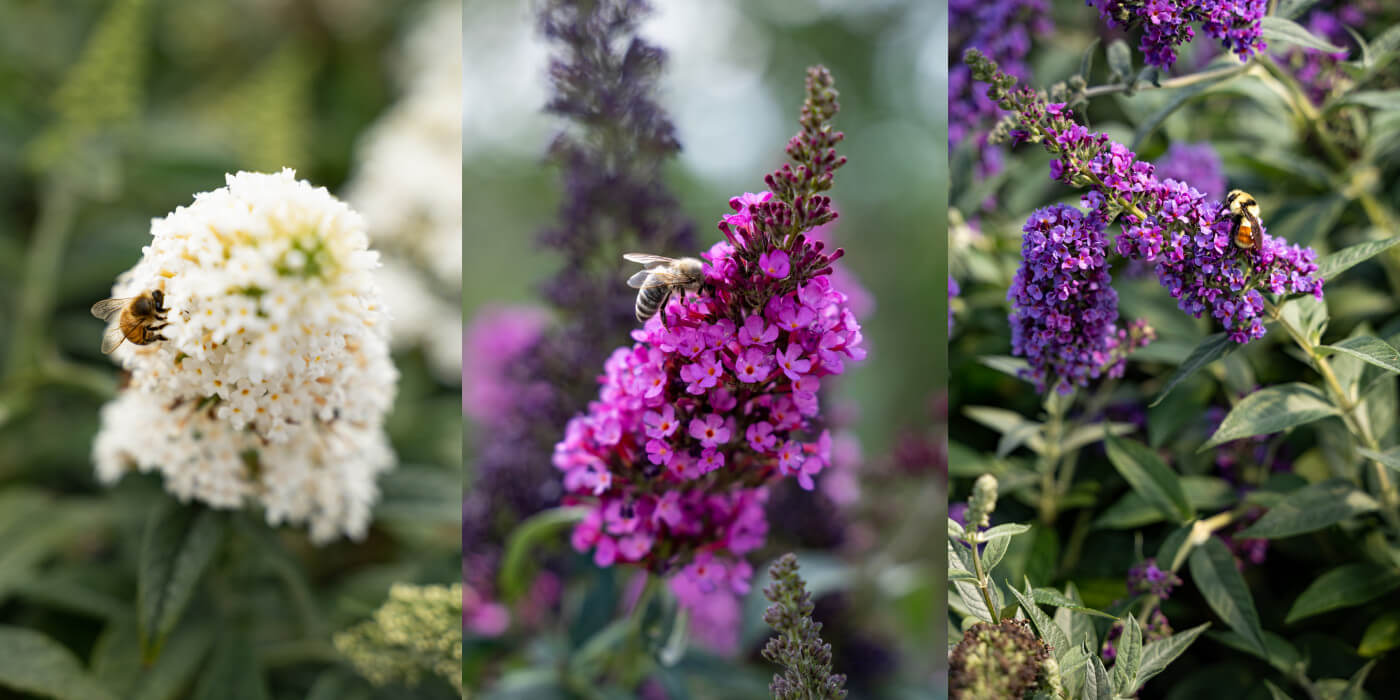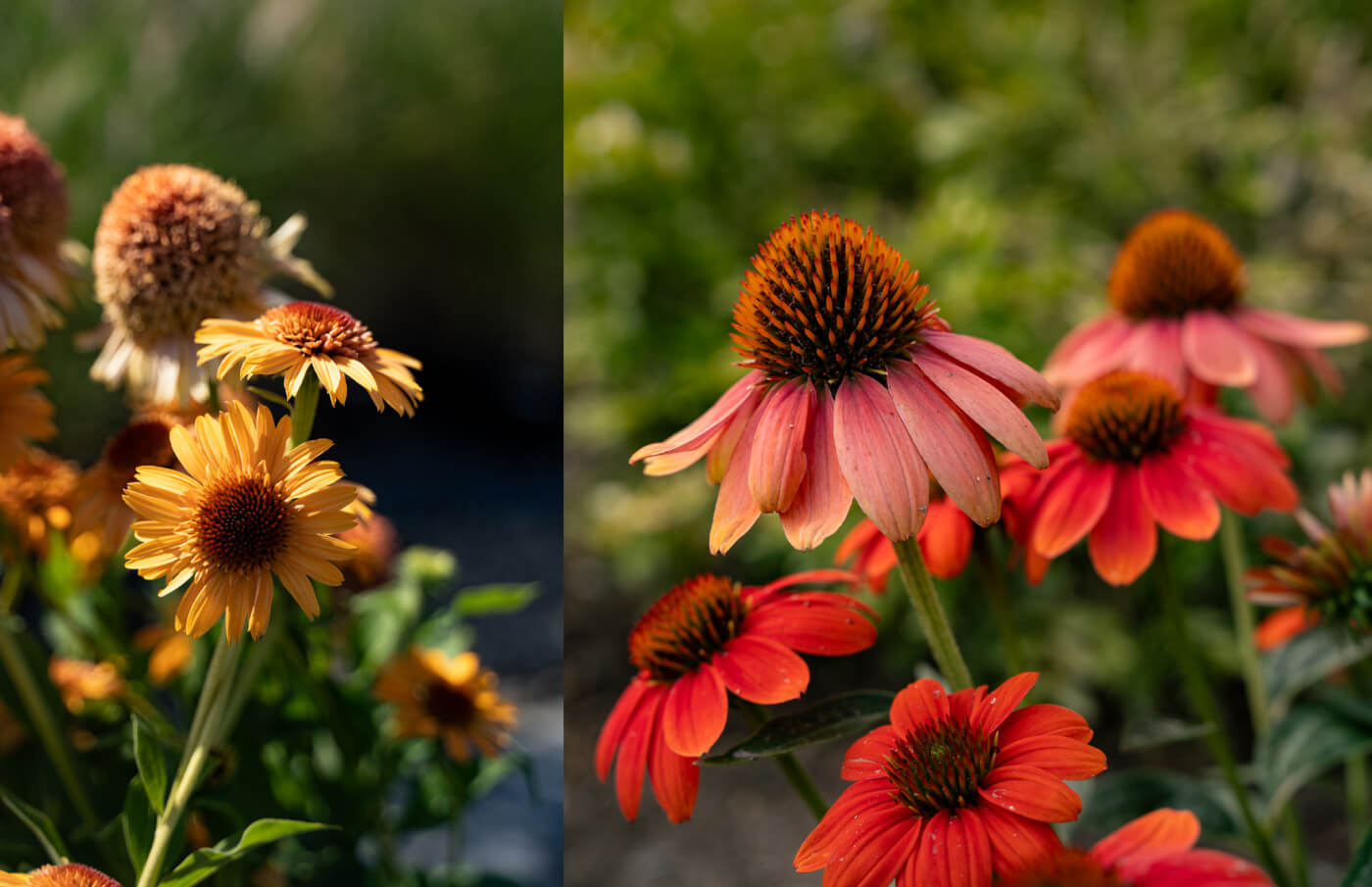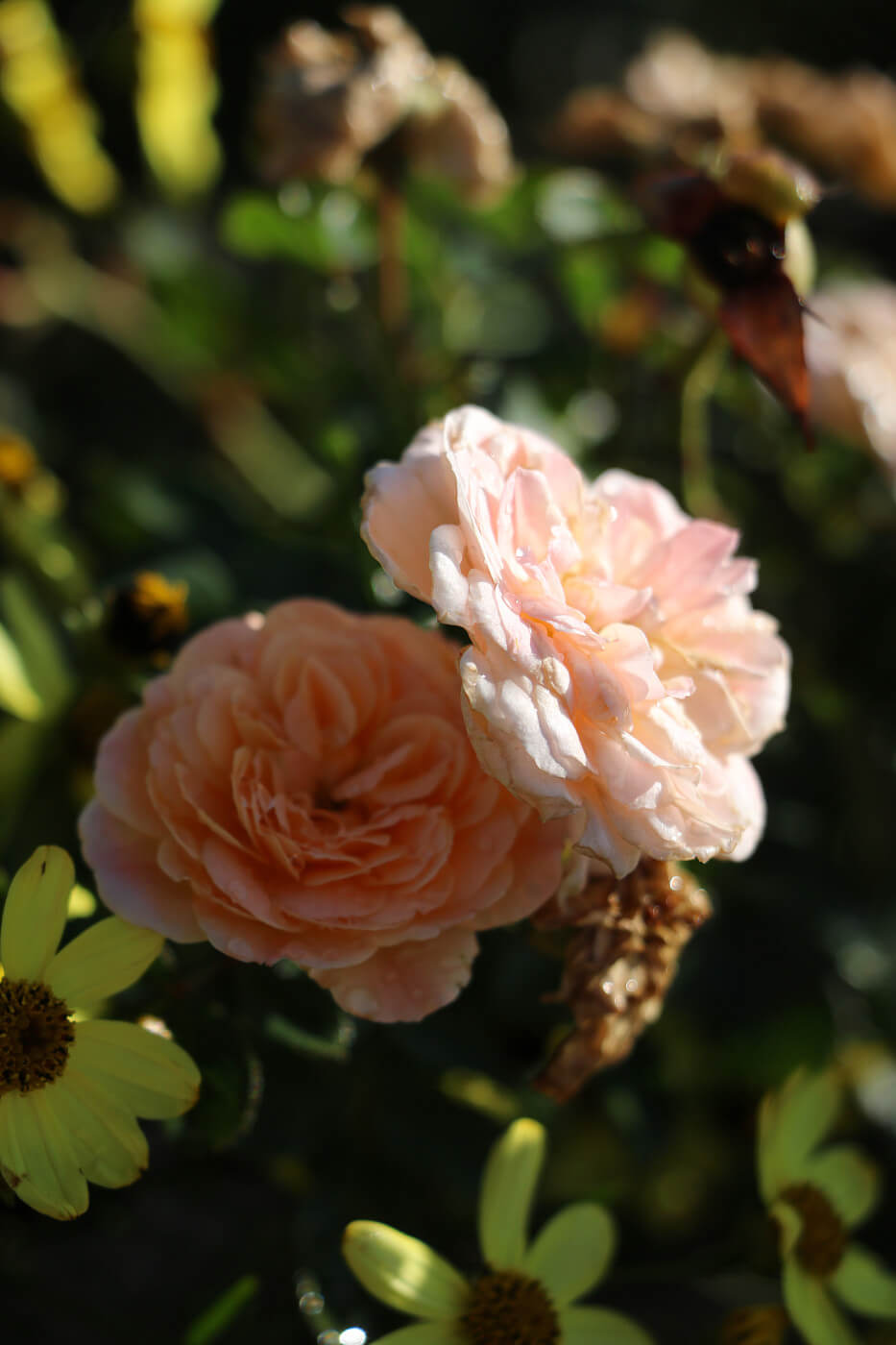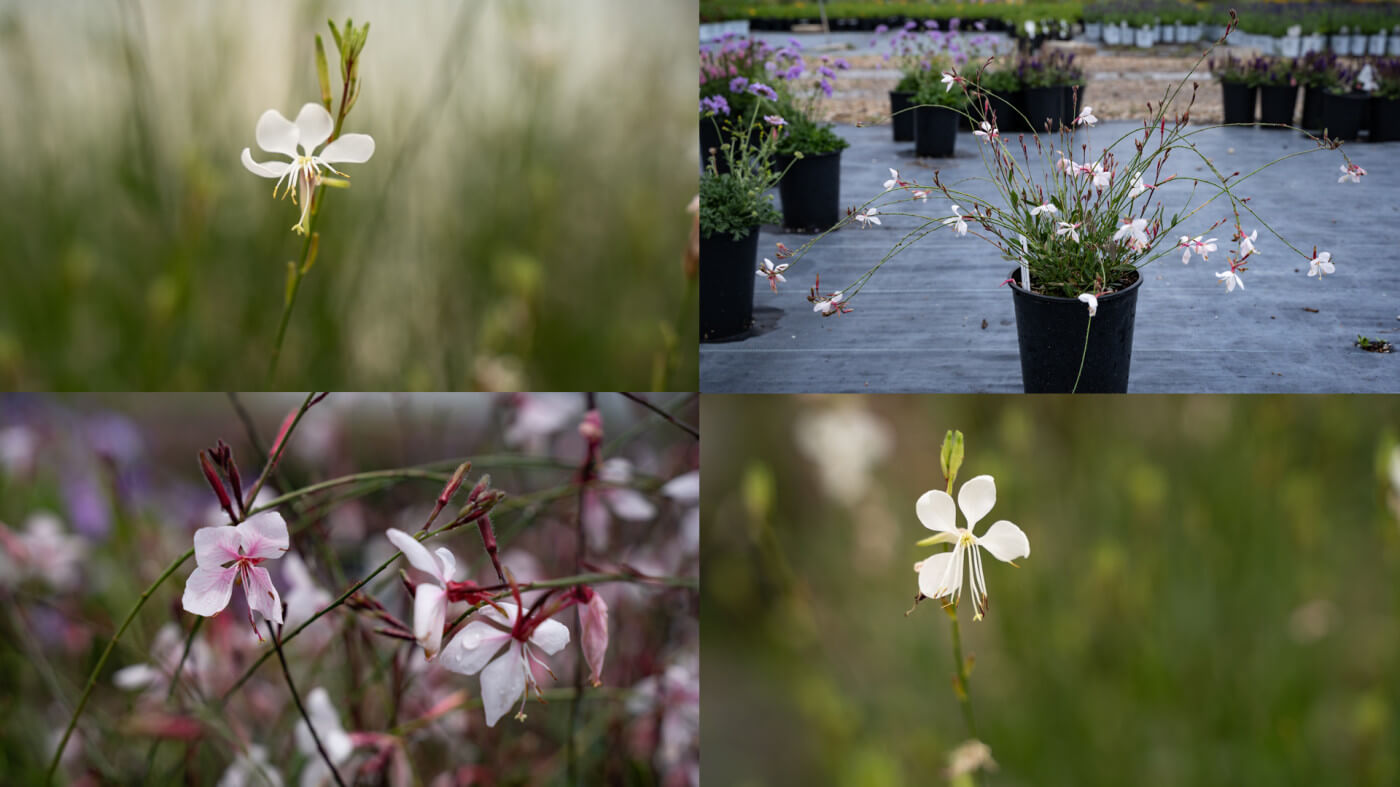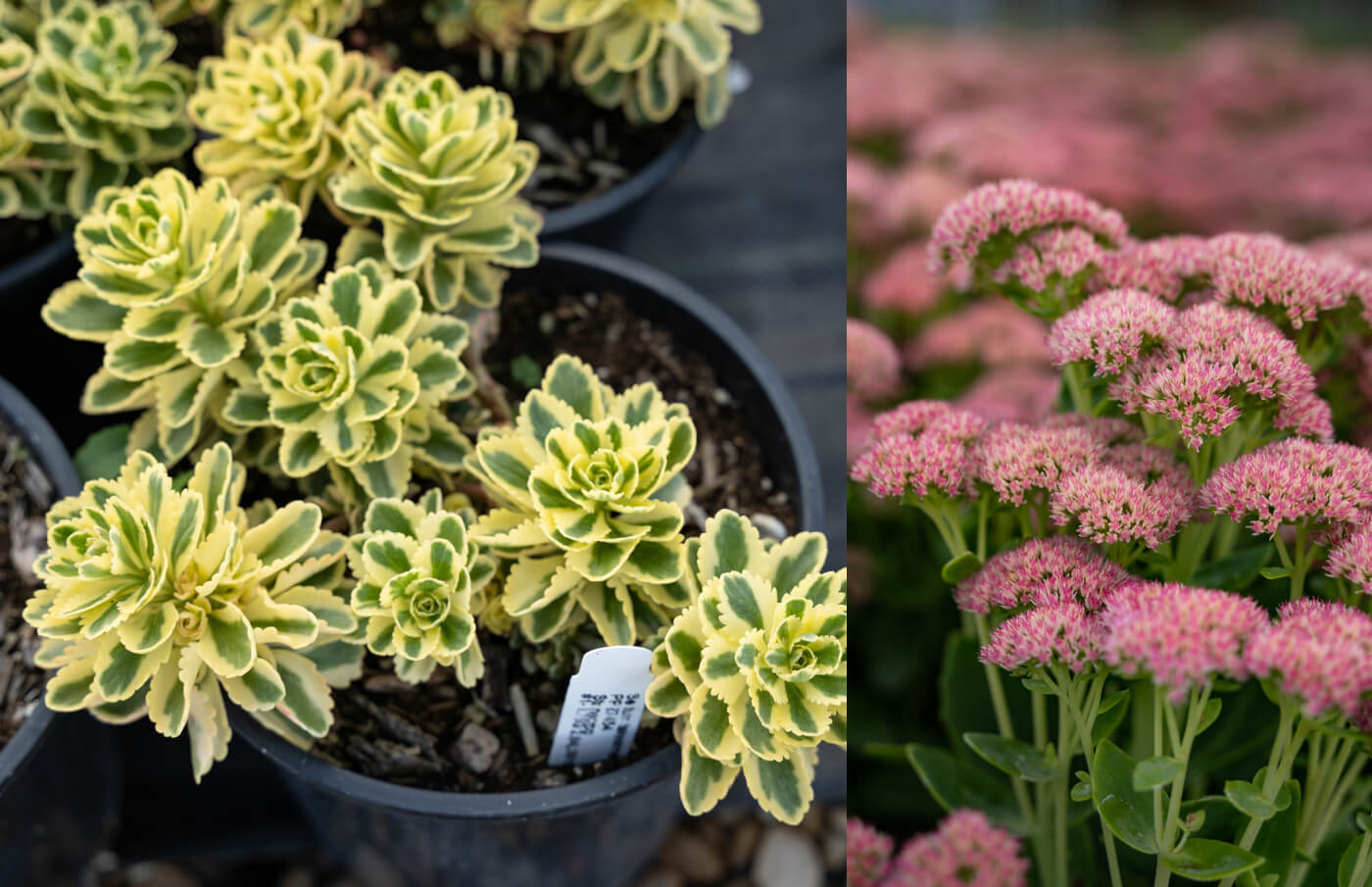Living here in Utah, we have to contend with some extreme temperatures—well below freezing during the winter months and over 100 degree heat in the summer. Our challenge is to find plants that can thrive in these wild temperature extremes. You select plants for your yard based on their hardiness rating, but that rating only tells half of the story. A plant’s hardiness is determined by its ability to withstand the cold. Not all cold-hardy plants can handle the hot, dry, months of summer in Utah.
Often, plants that struggle in the heat simply need to increase their water intake, but it isn’t always that easy. Every yard has microclimates. You’ll notice a significant difference between the microclimate of the north side of your house compared to the south side of your house, for example. If you have a hot spot in your yard where plants are baking, you may need to move your plants to a more protected location and replace them with a tougher plant.
Summer heat is one thing, but magnified summer heat is altogether different. There are places in almost every landscape where the temperature gets especially hot. Typically, these are areas that are not protected from the summer sun, and places where heat is magnified by a nearby structure. Because we live in the Northern hemisphere, the sun is always at least slightly south of us in the sky, even at noonday. That means that the sun beats down on the south side of your house year-round. That heat reflects from your house and radiates onto the plants growing against it. Even after the sun has set, the absorbed heat continues to radiate from the wall. If you have rock mulch in your planter bed on the south side of your house, it will be even hotter and less hospitable because those rocks will also absorb, reflect, and radiate heat.
There are other locations that can get overheated as well. Temperatures increase as the day progresses, so late afternoon sun is usually the most intense. If you have a home, barn, or shed with a west-facing wall, you’ll need to consider carefully what you will grow in the garden bed next to it. If that building has metal walls, it can be even hotter, making it difficult for plants to thrive in the heat. Perhaps the most common hot spots in Utah landscapes are our reflective white vinyl fences. It can be difficult finding plants that will survive in border gardens beside our hot fences.
Most of the time, there isn’t an instant solution that will make hot places cooler, so we need to find plants that are strong enough to handle that intense heat. Luckily, there are several superhero plants that you can use to create a stunning garden. We’ll share just a few of our favorites with you today.
Upright Junipers are designed to handle the heat.
Shown here left to right are: Blue Arrow, Spartan, Taylor, and Wichita Blue.
Juniper Trees and Shrubs
Junipers are designed to live in regions like ours where water is scarce. They can handle almost any soil type and are adaptable to dry soil. In fact, they don’t like to be left long in standing water. Their soft, scale-like leaves are a perfect adaptation for our hot, dry summer days. They also develop healthy root systems that allow them to glean the water that they need. You’ll want to water yours consistently for the first couple of years, but once they’re established, they’ll thrive on just a sip of water now and then.
Yarrow
Everyone knows that yarrow is heat and drought resistant. It grows very easily in Utah with very little water. Pollinators love it, and it produces flowers all summer long in a wide variety of colors. It will spread by seed, so you may need to pull it out of places where you don’t want it to grow, but it’s a fairly simple thing to do once or twice a year. Check out all of our yarrow options here.
Agastache / Hyssop / Hummingbird Mint
Clusters of long-blooming, tube-shaped flowers grow in a wide range of colors above beautiful light-green foliage. These stunning, drought-tolerant flowers are best when planted in mass for a stunning patch of color in your garden. They are pollinator favorites, attracting bees, butterflies, and hummingbirds. It’s great in any garden but it’s especially wonderful in waterwise gardens. You can take a look at all of our Hummingbird Mint here. If you find a plant that is not yet available, create a free online account and add the plant to your wait list. We'll contact you directly when they're ready.
Buddleia or Butterfly Bushes are available in a wide variety of sizes and shapes and offer long-lasting colors for your landscape!
Buddleia / Butterfly Bush
You may think you already know what butterfly bushes are, and you may already have your own opinion of them. However, buddleia is so genetically diverse that whatever image you have in your head is just the beginning. They grow in a wide array of sizes, from 12 feet tall and wide, to 2 x 2, and every size in between. Some may be described as gangly, while others would be considered neatly compact. They’re widely adaptable, tolerate various soil conditions, occasional drought, and even the nasty water from Utah Lake. Plus, they attract pollinators in droves, including bees, butterflies, and hummingbirds.
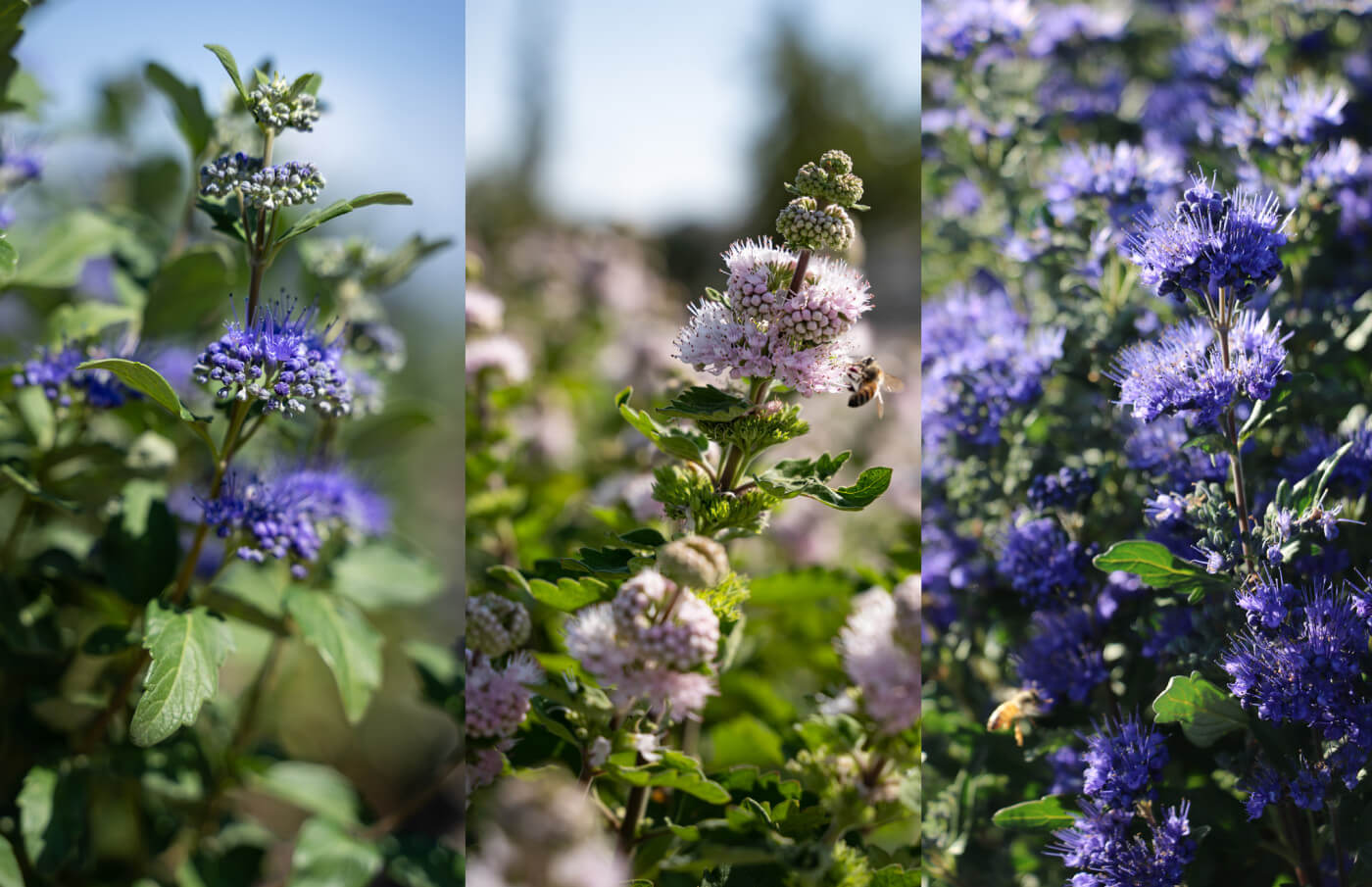 Caryopteris is amazing in the heat and pollinators love it!
Caryopteris is amazing in the heat and pollinators love it!
Caryopteris / Bluebeard Blue Mist or False Spirea
If you really want to attract pollinators and support your local bee population, you’ll want to grow caryopteris. They are a bee’s absolute favorite plant. Incredibly waterwise and stunningly beautiful with their clusters of blue, pink, or white flowers, they’ll add long-lasting color and interest to your landscape for years to come. And at a size of roughly 3’ x 3’, they’re ideally sized for any garden.
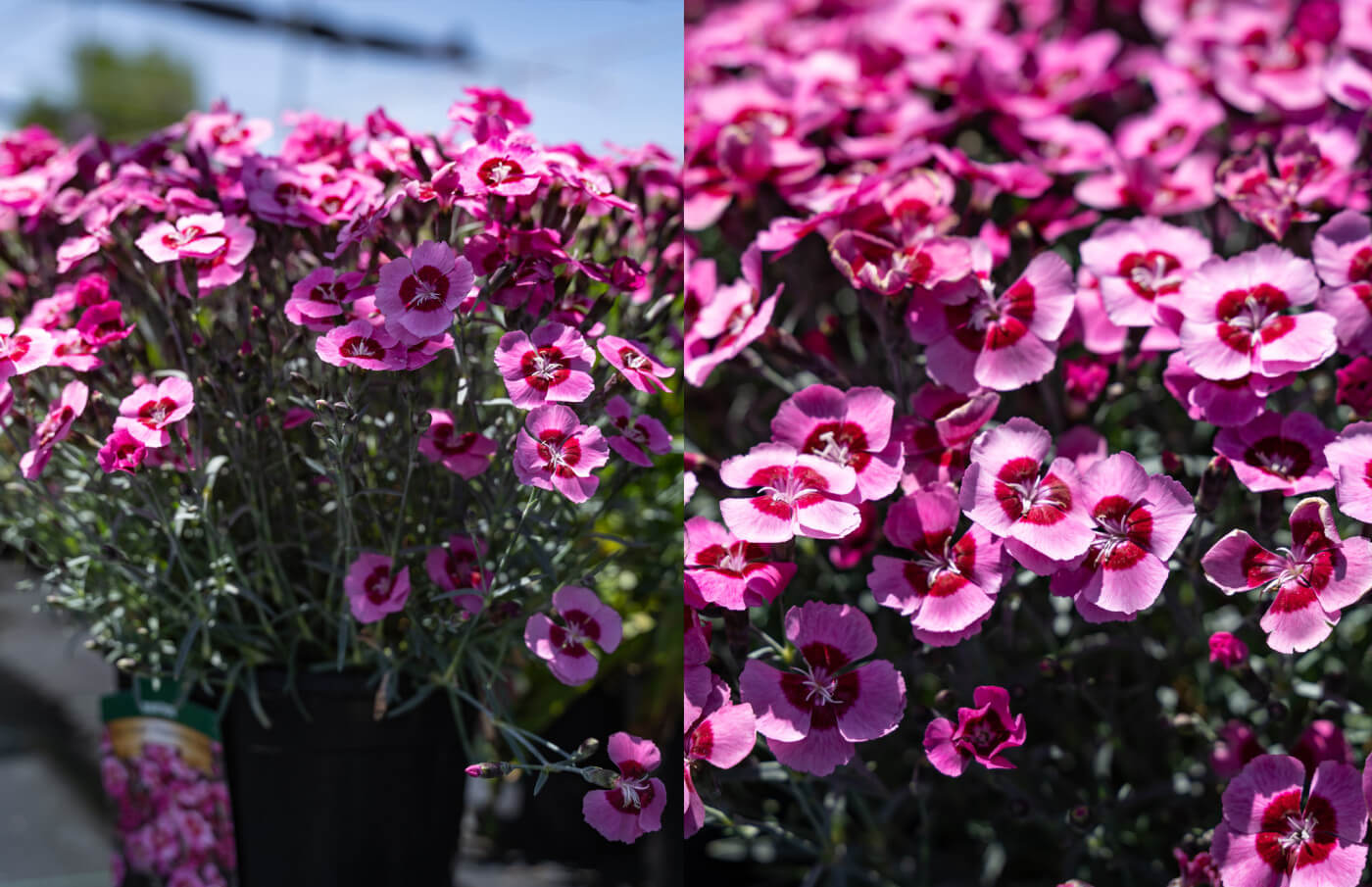 Dianthus STAR 'Noreen' PEPPERMINT STAR
Dianthus STAR 'Noreen' PEPPERMINT STAR
Dianthus STAR Single Neon Star Pinks
Dianthus x Odessa 'Orange Bling Bling' Pinks
Dianthus / Carnations
Dianthus are amazing flowers, and today’s cultivars will outshine anything your mother or grandmother used to grow. They’re available in almost any color imaginable, and they’ll grace your garden for years to come.
 Cytisus purpureus Purple Broom
Cytisus purpureus Purple Broom
Cytisus purpureus, Purple Broom
Lovely pea-like flowers in shades of pink and light purple grow in clusters along wiry branches from spring into summer. Tough and durable with an open habit, they make a simple filler plant when not blooming. Purple Bloom prefers dry soil and will likely die in standing water. It’s ideal for Utah because it thrives in alkaline clay soils, tolerates environmental salts, and is highly tolerant of urban conditions. It’s great for low borders and filling park strips.
 Rosemallow Hibiscus Airbrush Effect
Rosemallow Hibiscus Airbrush Effect
 Hibiscus syriacus 'Danica' Rose of Sharon
Hibiscus syriacus 'Danica' Rose of Sharon
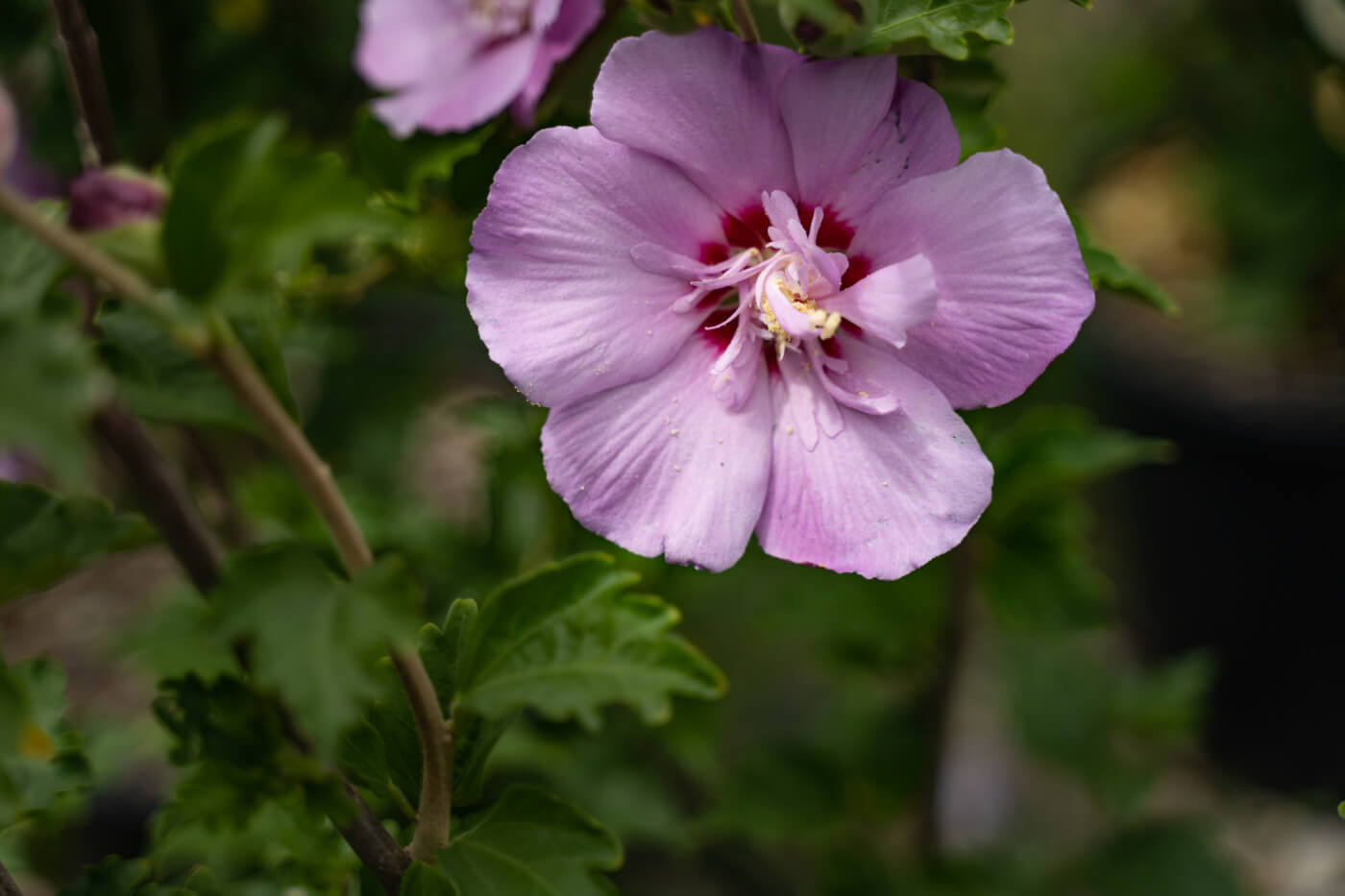 Hibiscus syriacus First Editions 'Mineru' Tahiti Rose of Sharon
Hibiscus syriacus First Editions 'Mineru' Tahiti Rose of Sharon
Rosemallow Hibiscus and Rose of Sharon Hibiscus
Hibiscus starts late in the spring, usually about three weeks after you’ve convinced yourself it died over the winter. It blooms profusely from summer until frost, requiring only a moderate amount of water. Rosemallow Hibiscus produce large 8-inch diameter flowers that look like they belong in a tropical forest, but they are content right here in our dry mountain desert landscape. Rose of Sharon hibiscus are available in an assortment of sizes and shapes. They can be grown as a shrub or in tree form, and the newer columnar varieties are growing in popularity. Their flowers are about 4 inches in diameter with a variety of colors and pedal counts. They’ll make a stunning statement in your hot spot garden.
Echinacea are stunning flowers for a hot spot
Echinacea / Coneflower
You may be surprised by the wide variety of colors and flower structures you’ll find in echinacea. These beautiful flowers are famous for their drought tolerance and bold colors. We feel strongly that every garden should have a few.
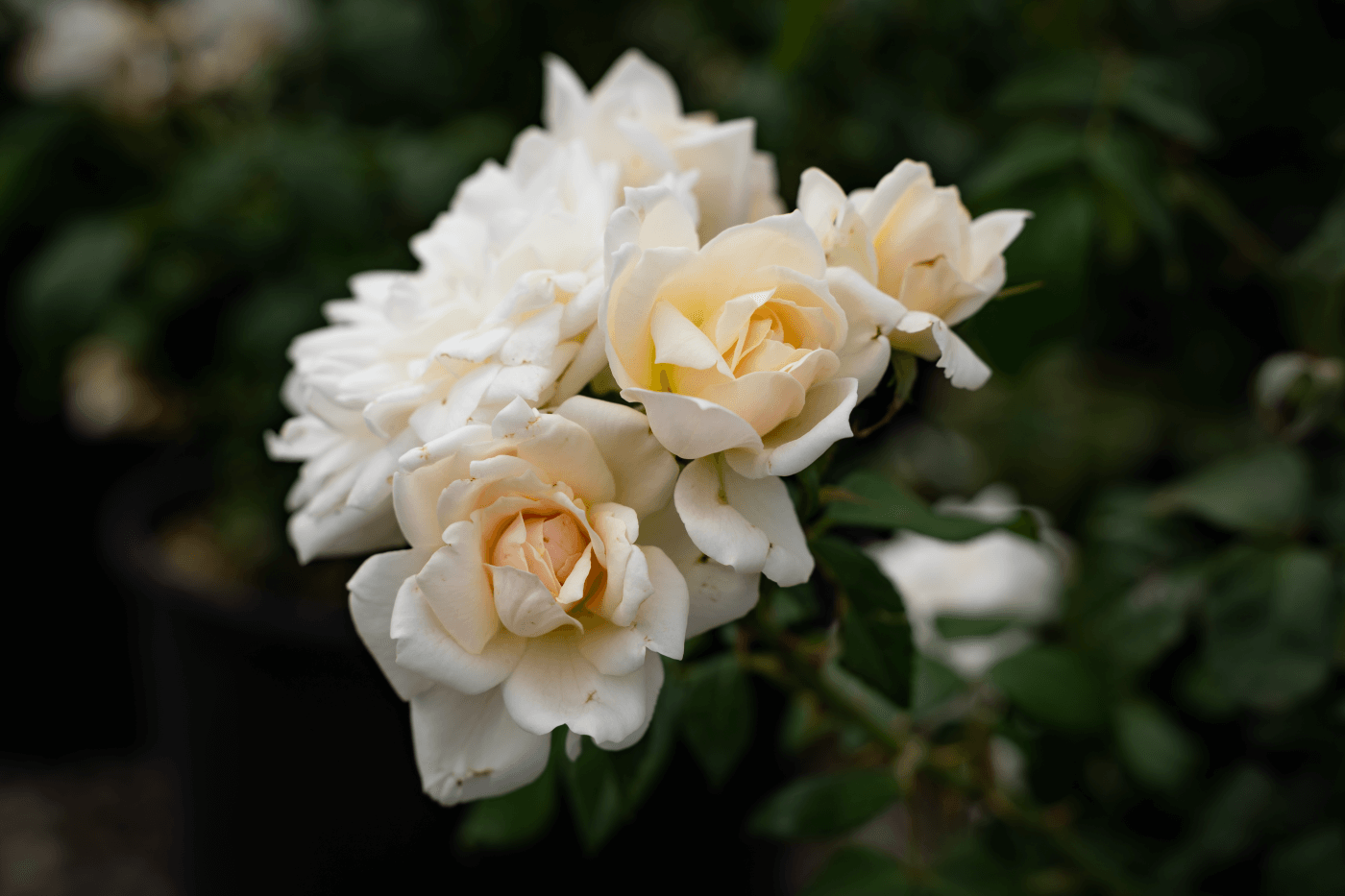 Rosa 'Morden Snowbeauty' White Roses
Rosa 'Morden Snowbeauty' White Roses
 Rosa Reminiscent Coral Fragrant Pink-Orange Shrub Roses
Rosa Reminiscent Coral Fragrant Pink-Orange Shrub Roses
Roses
You may be surprised to learn that roses are one of the most waterwise flowering shrubs you can plant in your yard. They’re incredibly versatile and easier to grow than you may have been told. In fact, several varieties have been awarded the blue ribbon for drought tolerance by the University of California Davis. Why not add a few to your garden?
 Salvia nemorosa Color Spires 'Crystal Blue' Meadow or Woodland Sage
Salvia nemorosa Color Spires 'Crystal Blue' Meadow or Woodland Sage
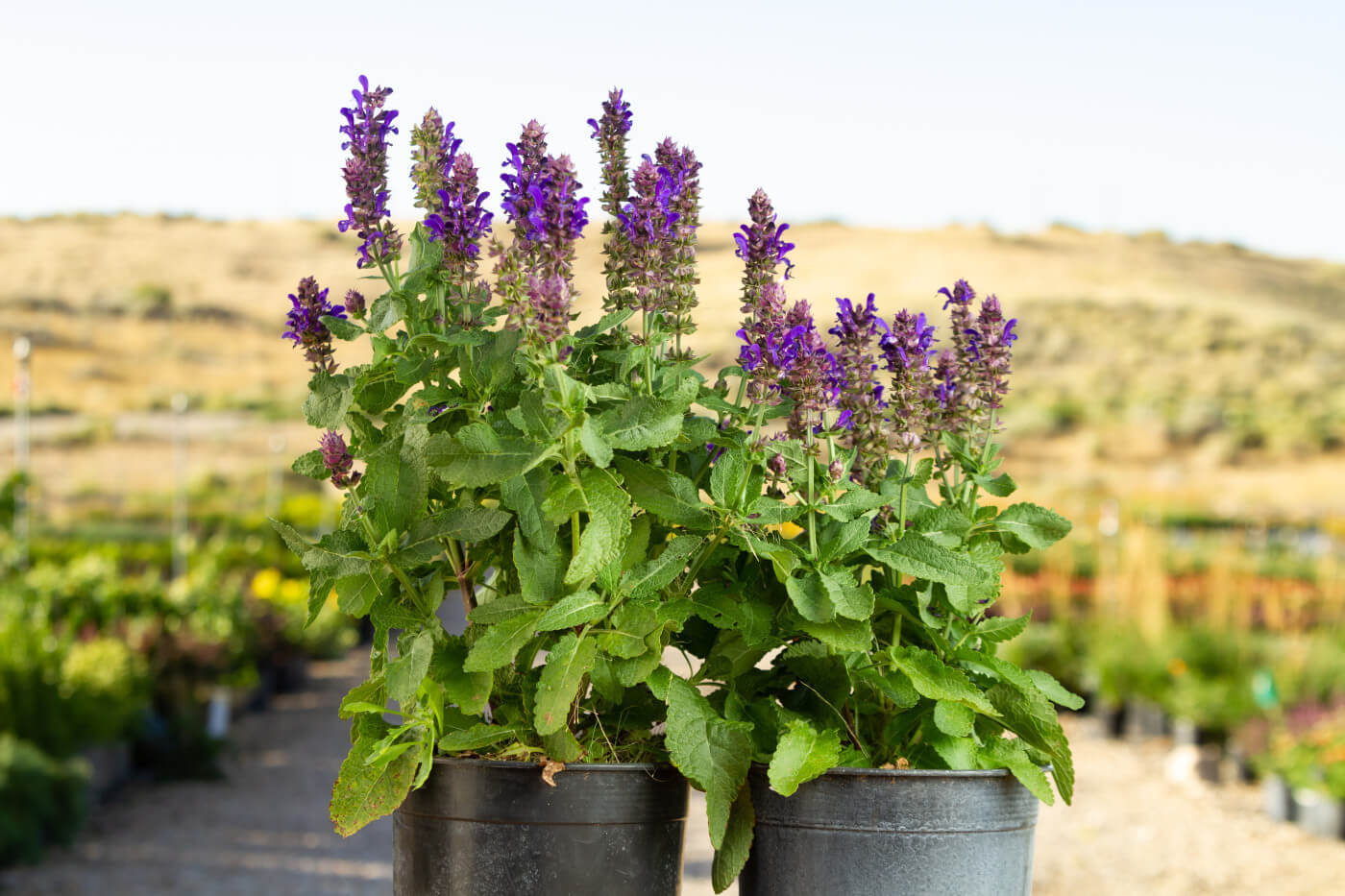 Salvia nemorosa Blue Marvel Salvia
Salvia nemorosa Blue Marvel Salvia
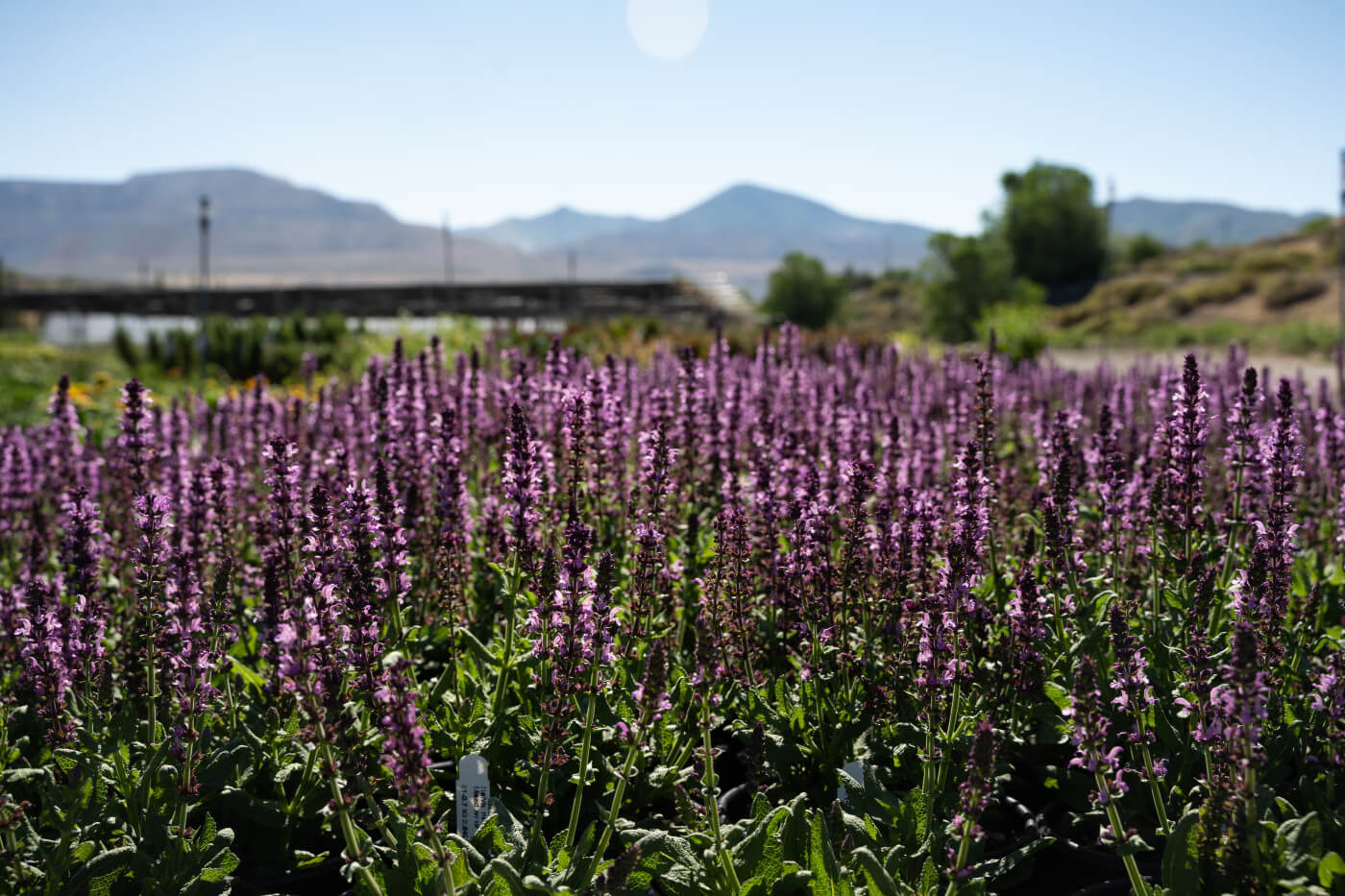 Salvia nemorosa LYRICAL 'Rose'
Salvia nemorosa LYRICAL 'Rose'
Salvia
Salvia, also known as Meadow or Woodland Sage is an outstanding way to bring long-lasting color to your landscape. It’s drought tolerant, deer resistant, thrives in various soil conditions, and even tolerates water from Utah Lake.
There are several new salvia cultivars that put the more common varieties to shame. We aren't talking about just a couple of plants, but several series of them: Marvel, LYRICAL, Color Spires, and more. These cultivars grow sturdier and more upright, they bloom much longer, and come in a wide range of colors! It’s time to rediscover salvia for its newfound beauty, vigor, and strength.

Penstemon or Beardtongue, such as the 'Dark Towers' and 'Red Riding Hood,' shown here, are fantastic flowers for a full-sun garden.
Penstemon / Beardtongue
You will love Penstemon for their durability and beauty, even in the height of summer. They feature clusters of small, colorful flowers that stand out beautifully against their bold foliage. They’re definitely one of our favorite heat resistant flowers. For the best effect, plant them in mass for a stunning patch of color in your garden.
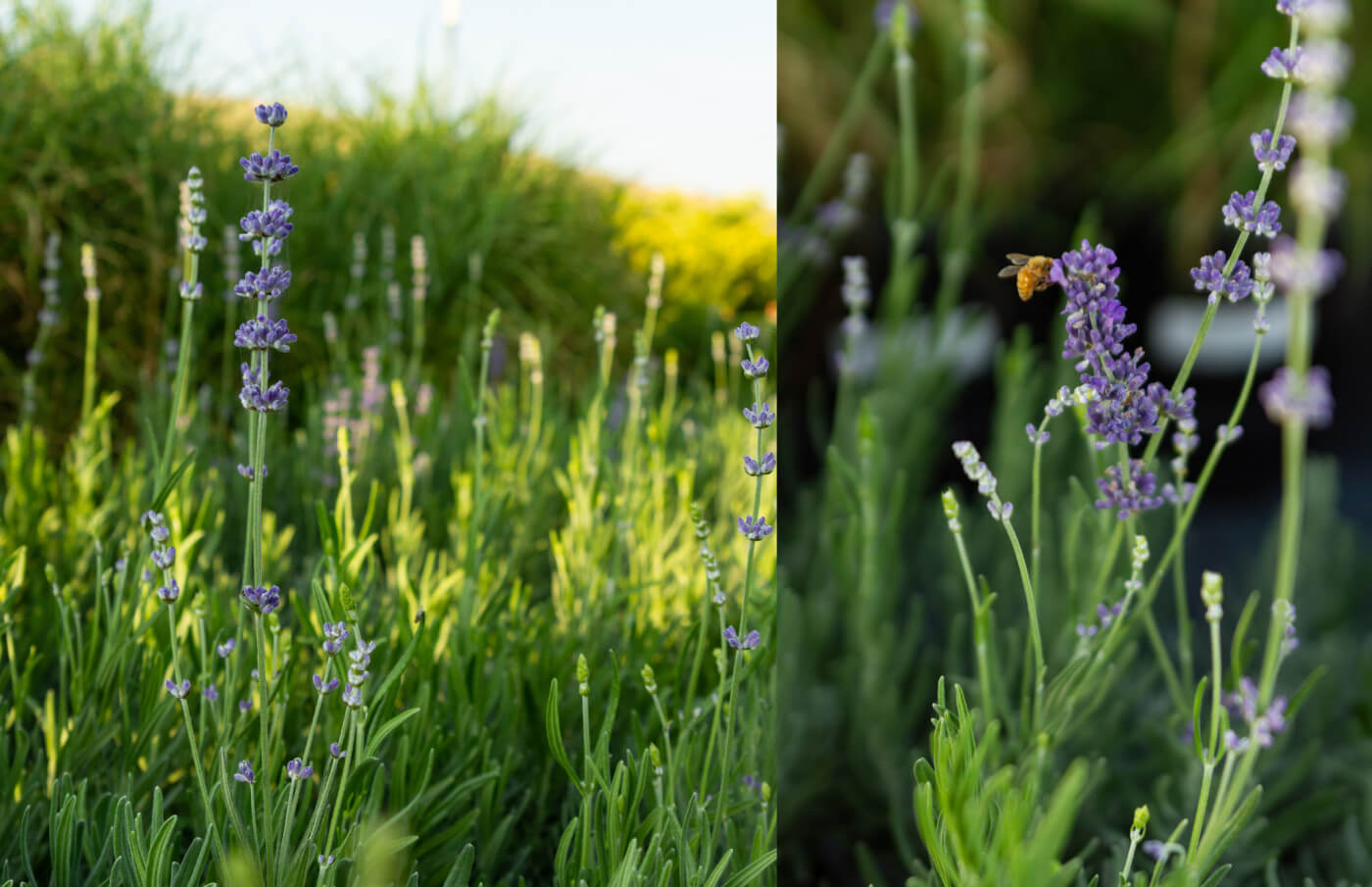 Lavandula angustifolia Martha Roderick
Lavandula angustifolia Martha Roderick
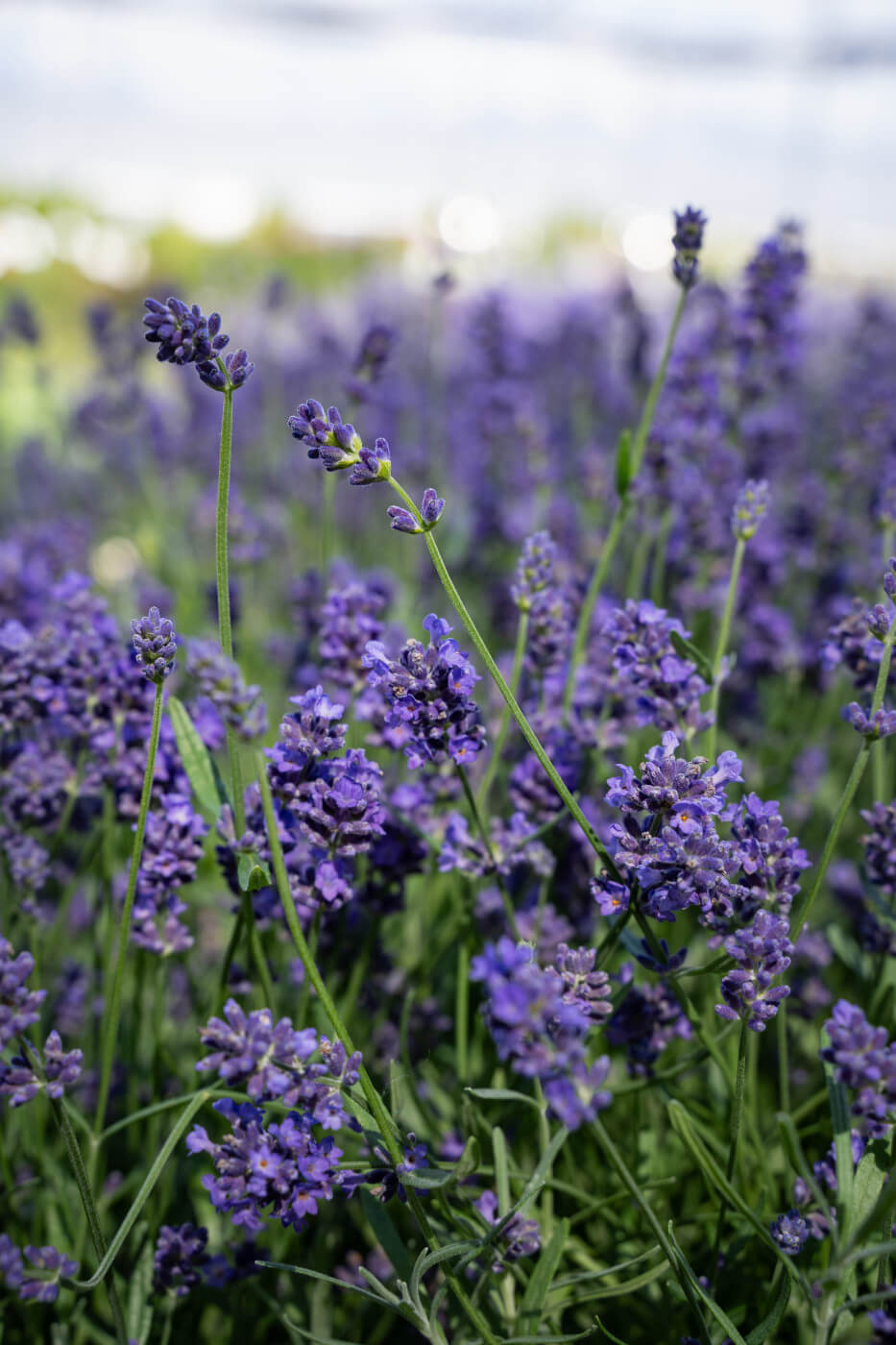 Lavandula angustifolia 'Essence Purple' Lavender
Lavandula angustifolia 'Essence Purple' Lavender
Lavender
Add amazing color and fragrance to your hot spot garden with beautiful lavender. Look through our online catalog and discover the many new varieties available. You’ll find lavender in shades of purple and blue and blooms that range from tiny to quite large (for lavender). Find them all in our catalog here. Because it's still early in the season, many of our lavender are still growing. If you see one you love that is not yet available, just add it to your wait list and we'll contact you directly when it's ready.
Iberis Sempervirens is one of our favorite plants because of it's outstanding blooms in the spring and its strong color and texture throughout the year.
Iberis (Candy Tuft)
This nearly evergreen plant is one of the first to bloom in the spring. It loads itself with small white flowers that last for weeks. When it isn’t in bloom, it provides a nice, textured patch of green in your garden. It is truly one of our favorites.
 Heliopsis, with its richly colored flowers and dark foliage is a stand-out plant in any landscape.
Heliopsis, with its richly colored flowers and dark foliage is a stand-out plant in any landscape.
Heliopsis / False Sunflower
Celebrated for its remarkable coloration and extended flowering duration, Heliopsis will grace your garden with remarkable daisy-like blossoms in a vibrant golden yellow or copper hue complemented by mahogany centers. Its tall, slender stems, adorned with rich, deep colored foliage tinged with red, offer an intriguing visual contrast. This plant is a magnet for butterflies, and it serves as a welcomed food source for songbirds, who are drawn to its seeds.
Gaura / Whirling Butterflies
This waterwise plant has been gaining popularity over the years and for good reason. Masses of small, butterfly shaped flowers hover on sturdy stems above a mass of neatly rounded foliage. In the breeze, it looks like butterflies are dancing above your garden. It’s a wonderful way to add color and motion to your landscape.
Sedum / Stonecrop
Sedum, or Stonecrop is an amazing family of plants that adds outstanding interest in the form of foliage color and texture from late spring through the frosts of fall. Many varieties bloom in the fall with a stunning display of color while most other plants are heading toward dormancy. Sedum provides eye-catching interest almost all year long. They’re a great way to fill empty spaces in borders or park strips.
Pincushion Flowers offer long-lasting color in your garden. Available in light purple, pink, and white.
Pincushion Flower
You can see why Scabiosa columbaria are called Pincushion Flowers. Its blossoms feature an outer ring of frilly, flat petals and a domed center of smaller petals that resemble cushions. Tiny stamens that rise up from the center of the flower resemble little pins. They are hardy in the cold to zones 3 or 4, and can still handle the heat of summer beautifully. They begin blooming in the spring and hold their color well into the summer. Beautifully suited for Utah, they’re waterwise, deer resistant, and tolerant of water from Utah Lake.
This is just a small taste of the plants that will thrive in your hot spots. You can find hundreds more by visiting ProgressivePlants.com. If you're looking for plants for your hot spots, create a free account with us and use our Garden Planner tool. You’ll find hot spot plants by selecting plants that require full-sun exposure and are also waterwise. Good luck, and happy gardening!

